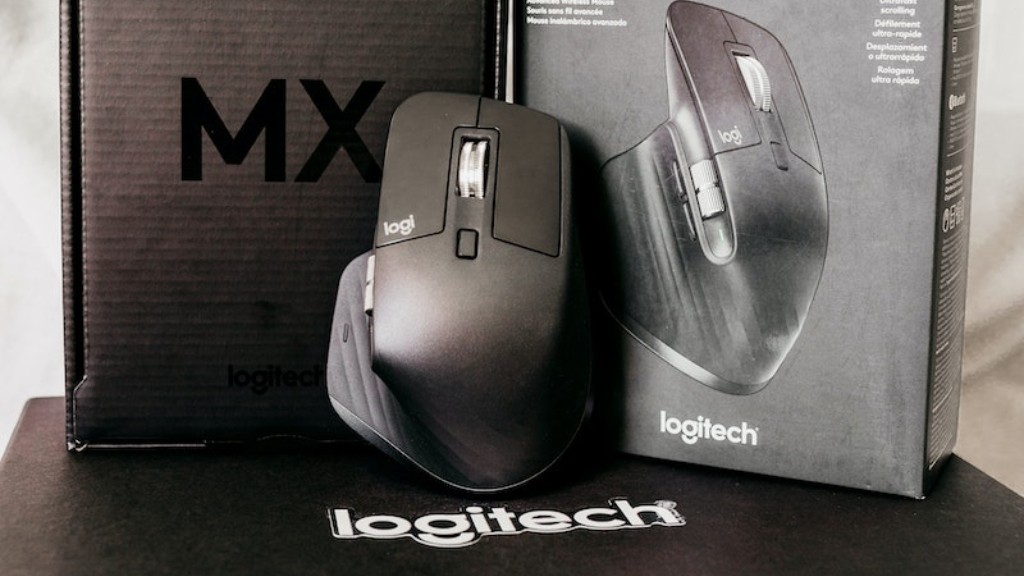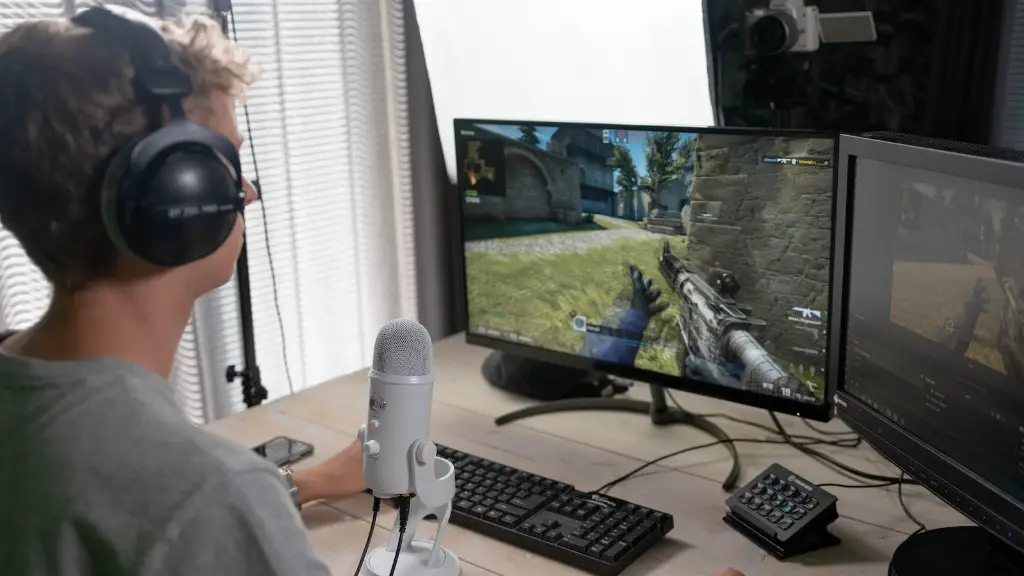Gone are the days when gamers had to settle for small and low-resolution gaming monitors. Nowadays, gamers have an incredible selection of monitors from which to choose when it comes to the best size gaming monitor. Before selecting the ideal size, it is important to look at factors such as the intended purpose, gaming style, physical space, and budget.
The first factor to consider when selecting the best size gaming monitor is the intended purpose. Gamers typically have different needs than those who use their computer for productivity or streaming. For instance, gamers typically need a monitor with a faster refresh rate and higher resolution as games tend to be more visually intensive and require a smoother experience when playing. For those who use their computer for productivity such as work, streaming, and browsing, a less expensive monitor with a lower resolution and slower refresh rate will work sufficiently.
The next factor to consider when selecting the best size gaming monitor is the gaming style. There are two main types of gamers: those who play for long periods at a time, such as for professional tournaments, and those who play casually and usually have shorter gaming sessions. For the former, a larger size monitor is usually preferred as it offers more viewing space, less eye-straining and higher resolution. For the latter, a smaller size may be sufficient as it is more heavy on the budget and takes up less space.
Another factor to consider when determining the best size gaming monitor is the physical space available. Gamers with limited space, such as those operating out of dorm rooms and apartments, may prefer a smaller size monitor to save space and allow for more movement in limited areas. On the other hand, those with ample space, such as those gamers playing out of game rooms, can afford to look for bulky and larger sized monitors.
The final factor to consider is budget. It is important to keep in mind that although larger and higher-resolution screens may appeal more to gamers, they also come with a heftier price tag. Gamers on a budget will likely opt for a more moderately sized monitor to keep the cost reasonable. Conversely, those without budget constraints may look for the best resolution and size monitor.
UHD and 4K Monitors
When it comes to gaming monitors, UHD (Ultra High Definition) and 4K (Quad High Definition) monitors provide supreme picture quality and extraordinary gaming experiences. UHD and 4K offer amazing resolution that is often much higher than that or the latest 1080p HD monitors. UHD monitors have a resolution of 3840 x 2160 and 4K monitors have a resolution of 4096 x 2160. Furthermore, UHD monitors have larger aspect ratios, being 16:9, while 4K monitors have a narrower 16:10 aspect ratio.
UHD and 4K monitors also require much more GPU power to run; typically a GTX 900 series or GTX 1050 ti or higher is recommended. Additionally, gamers must consider the viewing distance when contemplating UHD or 4K gaming monitors. As UHD and 4K monitors have much higher pixel counts, gamers must be seated fairly close to reap the benefits of the resolution. Consequently, UHD and 4K monitors are generally best for gamers who sit fairly close to their monitors and have compatible GPUs.
UHD and 4K monitors also tend to have exceptionally fast response times and refresh rates. For instance, some 4K monitors boast 1ms (GtG) response times, while other 4K monitors have a refresh rate of up to 144Hz. This makes them ideal for competitive gamers or those who need a smooth gaming experience with no ghosting or tearing.
Last but not least, UHD and 4K gaming monitors are quite expensive. These monitors can cost between three to five times more than 1080p monitors. Consequently, UHD and 4K gaming monitors are typically best suited for gamers who can afford the cost and are looking for the highest resolution and best visual performance.
144Hz Monitors
144Hz monitors are some of the best available to gamers and are capable of providing an ultra-smooth gaming experience. 144Hz monitors are the ideal choice for serious gamers, such as those playing professional tournaments, as they provide flawless frames without ghosting or tearing. What’s more, most 144Hz monitors also come with G-Sync or FreeSync technology, ensuring games run optimally and require minimal input lag.
The downside to 144Hz gaming monitors is that they are more expensive than regular gaming monitors and often require GeForce or Radeon GPUs for full support. Furthermore, 144Hz monitors usually have shorter life spans than lower refresh rate monitors due to their fast and intense use. Despite the cost and lifespan, 144Hz monitors are the ultimate choice for gamers seeking fluid sessions and an immersive gaming experience.
In conclusion, when selecting the best size gaming monitor, it is important to consider factors such as the intended purpose, gaming style, physical space, and budget. UHD and 4K monitors offer superior picture quality and require more GPU power and sitting distance, while 144Hz monitors have lesser resolutions but offer incredibly smooth gaming experiences suited for competitive gamers. Ultimately, gamers are able to find the optimal monitor for them, depending on how much they are willing to invest.
IPS Monitors
IPS (In-Plane Switching) monitors provide some of the highest viewing angles and colours. IPS panels are characterized by their wide viewing angles and accurate colours, making them the ideal choice for gamers who appreciate beautiful visuals. Most IPS monitors also have higher resolutions, reaching up to 5K, although their refresh rates tend to be lower than other gaming monitors.
One of the main drawbacks to IPS monitors is their response time, as they often have slow response times when compared to other monitor types. Gamers who play competitive games may prefer a monitor with a faster response time for smoother gameplay, although IPS monitors often have other uses such as browsing and streaming videos.
An additional downside to IPS monitors is their limited support for G-Sync and FreeSync. As such, gamers with a compatible GPU may experience issues when using an IPS monitor. Moreover, IPS monitors are typically more expensive than other types of monitors due to their better picture quality and wider viewing angles.
Overall, IPS monitors typically provide gamers with some of the best images available. They have wide viewing angles, high resolutions and accurate colours and are suitable for professional or casual gaming. However, their slow response times and lack of G-Sync and FreeSync support can be a concern depending on the type of GPU in use. Additionally, IPS monitors often come with a hefty price tag due to their quality.
High-End Monitors
Monitors that are considered to be high-end are top-of-the-line cost-wise, featuring the most advanced technology available. These monitors usually have the highest resolutions, refresh rates, and response times available; some even come with built-in speakers and RGB lighting. High-end gaming monitors are also typically curved for a more immersive experience.
The primary disadvantage to high-end monitors is their cost. Many of these monitors come with hefty price tags, making them unaffordable for some gamers. Additionally, gamers may need to purchase more powerful GPUs to run these monitors properly. High-end monitors also tend to require more power, often necessitating the use of supplemental power supplies.
Despite their cost and the additional peripherals needed, many gamers are willing to invest in high-end monitors as they unlock possibilities not available on less expensive monitors. High-end gaming monitors generally offer the best visuals available and can make gaming more impressive and immersive. As such, gamers who are willing to spend the money and make the necessary adjustments can get the most out of their gaming.
Conclusion
When selecting the best size gaming monitor, there are several factors to consider, such as the intended purpose, gaming style, physical space, and budget. UHD and 4K monitors provide the highest available resolution, making them perfect for those who can afford them, while 144Hz monitors offer ultra-smooth gaming experiences. In addition, IPS monitors typically boast wide viewing angles and accurate colours and high-end monitors often include a range of extra features, although they tend to be pricey. Ultimately, gamers should assess their own needs and preferences to determine the best size gaming monitor for them.



